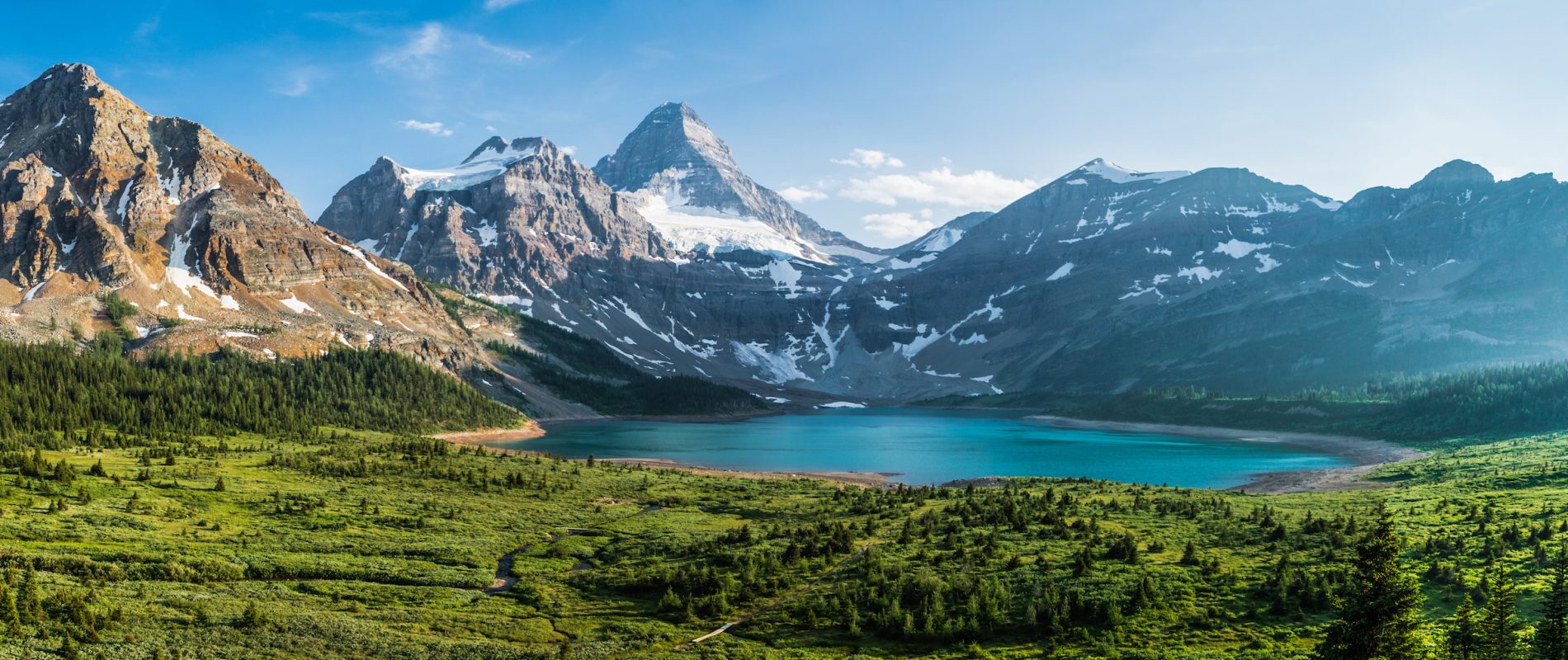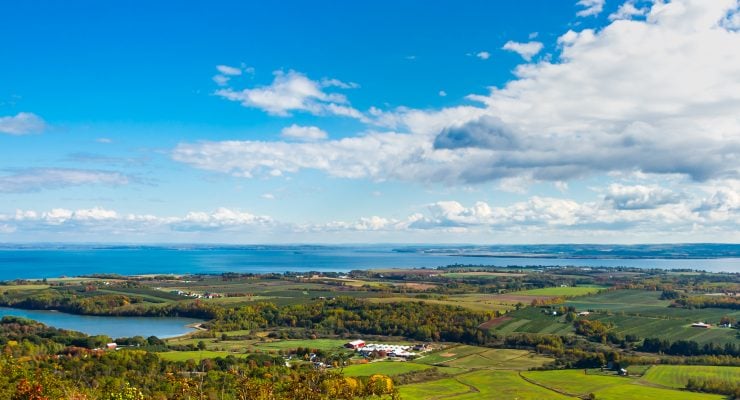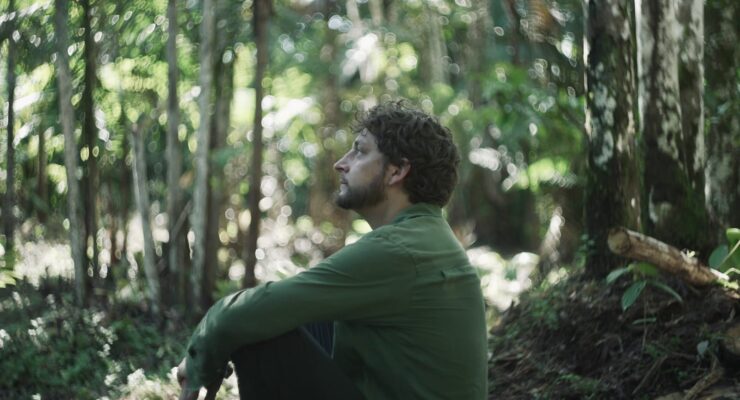Summary
- Introduction
- WORKING HOLIDAY VISA AND CANADA 101 - Why should you apply for a WHP?
- One WHP, many ways to live the experience
- The WHP experience with a disability
- Where should I go?
- Going off the beaten track—a few testimonies
- An overview of Canadian provinces and territories
- Applying for a WHP
- The first steps to prepare for the adventure
- How can I find the best health insurance policy?
- Step-by-step pre-trip prep
- Last steps before leaving the country
- O, CANADA, HERE I AM! - Landing in Canada
- Applying for a Social Insurance Number
- Registering with your local embassy or consulate
- Opening a bank account and transferring your money
- Choosing your Internet and cellphone provider
- Becoming a “Canadian customer”—grocery shopping and more
- MAKING THE MOST OF YOUR CANADIAN ADVENTURE - Improving your French or English skills
- Finding long-term accommodation
- Growing a network and creating a Canadian-style resume
- Looking for job offers and going through the hiring process
- Volunteering with WWOOF, HelpX and Workaway
- Buying a car or van
- Canadian culture 101
- Dealing with health issues
- Dealing with homesickness, anxiety and financial issues
- EXPLORING CANADA - Getting around in North America
- The best adventures in Canada
- The best destinations across Canada - The best destinations across Canada
- Road trip 101
- Tips for crossing the US border without hassle
- THE ADVENTURE IS OVER… NOW WHAT? - Dealing with mixed feelings and the reverse culture shock
- Going back to Canada… or travelling elsewhere!
Becoming a “Canadian customer”—grocery shopping and more
Grocery shopping 101
Stepping into a supermarket for the first time in a foreign country is a fascinating experience. Unfamiliar brands, strange snacks, emphasis on some products—e.g. frozen food and cereals in Canada!—and completely different prices… chances are, your first grocery trip will take much longer than usual!
Many Canadians shop in different supermarkets to take advantage of “specials” (promotions) in the weekly flyer available online or in stores. Couponing is also a popular way to save a few bucks on groceries. Bottom line is, grocery prices change often and it’s best to shop around for the best deal (and stock up when a non-perishable product is on sale).
There are plenty of new products for you to discover—maple syrup, pancakes, oatmeal, local squash, cheese curds and tons of sweets—but it won’t take you long to realize a few of your favourite foods are probably missing. Forget about raw milk cheese—actually, forget about cheese, period, unless you’re willing to spend a lot of money on imported Italian, French or Swiss cheese. Even cheese from Quebec is expensive! Dairy products in general are more expensive than in Europe and there’s less selection.
Imported goods are heavily taxed but you should be able to find a few treats from home in smaller, ethnic groceries stores and occasionally in large supermarkets.
The major chains nationwide are Loblaws (including Freshmart, The Real Canadian Superstore and Provigo), Metro, Sobeys and Walmart, the American multinational. Most of these groups operate low-cost supermarkets as well, such as No Frills, Food Basics and FreshCo.
Québécois 101
In France, you get appliances and cars fixed at the dépanneur, but in Quebec, you buy chips, cigarettes and booze at the dépanneur! Same word, different meaning—in Quebec, it’s a convenience store that fixes you up with basic everyday items.
Costco has developed a sort of cult following in North America. Imagine a giant warehouse open to the public where ketchup jars, packs of cookies and boxes of detergent are twice the normal size but much cheaper. You can get good deals if you shop with roommates but you need to buy a Costco membership first.
Alternatively, you can buy bulk foods (cereals, rice, cookies, spices, etc.) at Bulk Barn and in many Canadian supermarkets.
At most supermarkets, you can use cash, debit or credit to pay. If you pay with your debit card, you can ask for “cashback” (i.e. “cash out” in Australia and New Zealand). The amount of your choice is added to the total purchase price of a transaction paid by debit card and you receive that amount in cash along with the purchase. For example, if your grocery bill is $20 and you want to “withdraw” $30, you ask to pay $50 and leave with your groceries and $30 in cash. This is a good way to skip ATM fees.
Organic, vegetarian, vegan and other special diet products
Most supermarket chains now offer a selection of organic foods, especially produce. However, organic dairy products and meat are still much more expensive. In bigger cities, you should be able to find smaller stores selling organic food and several alternatives to buy directly from producers. Whole Food Market, the American supermarket chain specialized in organic products, has several stores in BC and in Ontario—however, there’s a reason why its nickname is “whole paycheck,” expect your groceries to cost more!
Foods are clearly labelled for those with allergies (very common in Canada) and dietary restrictions. Halal, kosher, gluten-free, low-fat, etc. foods are easy to find even though they may cost more.
Vegetarians and vegan will find products suitable to their diet, including in restaurants.
General supplies and furniture for your new place
Dollarama is Canada’s largest retailer of items for four dollars or less. It’s a good place to shop for kitchen, bathroom and office supplies (coat hangers, plastic containers, envelops, Post-it notes, etc.) when you move. There are also cleaning products and non-perishable foods (canned goods, sweets, etc.) but they aren’t always cheaper than in regular stores.
For free furniture, just take a walk around your neighbourhood—or better yet, a “posh” neighbourhood!—on garbage pickup day. To get rid of what they no longer need, Canadians tend to drag their used items out to the curb and put a “FREE!” note on them. Someone may be interested and take it from the street. If not, it will be picked up with the regular garbage! “Curb mining” is a good way to find second-hand appliances, electronics, furniture, etc. Just avoid picking up that old mattress, bedbugs are a problem in North America.
Garage sales are a more organized version of curb mining. Some are regular neighbourhood-wide events (especially in the spring) or it can be just one family running the sale. Anything for sale will be displayed in the front yard or driveway—expect clothes, tableware, boxes of magazines and paperbacks, small appliances and furniture, CDs, etc. Prices are usually very low and you can bargain. Note that you will have to get up early to grab the best deals (some people are really into garage sales…)
There are also several thrift store chains like Value Village, Salvation Army, etc.
Finally, Craigslist and Kijiji are a good way to buy second-hand furniture and other items.
Retail pharmacies
Need Aspirin? Just pick it up at the same time as your cleaning supplies, your favourite soft drinks, a magazine and some face cream. Most pharmacy chains in Canada (e.g. Shoppers Drug Mart, Rexall, Jean Coutu, etc.) sell over-the-counter drugs, fill prescriptions and sell health and baby products, cosmetics, stationary and greeting cards, seasonal items and convenience food.
You’ll often find a Canada Post outlet at the back of the store. This is also where you can pick up passport applications, tax forms and have your passport photo taken!
You were looking for Aspirin, right? Suddenly, you are leaving the “pharmacy” with chips, postcards and toothpaste!
Alcohol, tobacco and recreational marijuana
Alcohol
In Canada, the sale and distribution of alcoholic drinks is the sole responsibility of the ten provinces and the three territories. This means that there is a separate body in each province responsible for regulating the consumption of and, in all but one case, the sale of alcoholic drinks.
The legal age for purchase is:
- 19 in BC, New Brunswick, Newfoundland and Labrador, Northwest Territories, Nova Scotia, Nunavut, Ontario, PEI, Saskatchewan, and Yukon
- 18 in Alberta, Manitoba and Quebec.
Always carry ID, you will be carded.
This is how alcohol is sold in provinces across Canada:
- Alberta: Beer, wine and spirits are sold at the Liquor Barn.
- British Columbia: Beer, wine and spirits are sold in the provincially owned BC Liquor Stores and in private liquor stores. Craft beer can be purchased at the brewery.
- Manitoba: There is a mix of government-run (Liquor Mart) and private wine and beer stores. Hotels are allowed to sell beer as licensed vendors, similar to “off sales.”
- New Brunswick: beer, wine and spirits are sold in provincially owned liquor store outlets, Alcohol NB Liquor. A limited selection of wines is available at some grocery stores.
- Newfoundland and Labrador: Beer is available in various convenience stores. Liquor and beer are sold at provincially owned liquor store outlets (LNC). Wine is only sold at provincially owned liquor store outlets.
- Nova Scotia: Beer, wine and spirits are sold at provincially owned liquor-store outlets (NSLC). Some beer, wine and spirits are available at some private stores.
- Ontario: Beer and wine are sold in provincially owned liquor-store outlets (LCBO and Beer Store). The legislation changed recently and beer, wine and cider are now available in many grocery stores across the province.
- Prince Edward Island: Beer, wine and spirits are sold at provincially owned liquor store outlets (PEILCC) and a number of licensed agency stores.
- Quebec: Beer and wine are sold in grocery stores and corner stores. Wine, spirits and select beer are sold in government-run outlets, SAQ.
- Saskatchewan: Beer, wine and spirits are sold at provincially owned liquor stores (Sask Liquor), rural franchises licensed by the government, and in three privately owned stores. Beer, wine and spirits are also available at various “off sales” attached to bars and restaurants.
Hours are limited in both provincially owned stores and supermarkets. I.e. your local supermarket may be open 24/7 but you won’t be able to buy alcohol past a certain time. Plan ahead if you’re throwing a party!
The consumption of alcohol in public places is generally forbidden, regardless of the time. In all provinces and territories, the consumption of alcohol is forbidden while driving, with Ontario and Quebec also forbidding the possession of open non-empty containers within a motionless vehicle.
Alcohol is more expensive than in many countries. Beer is more affordable.
In “BYO” restaurants, you can show up with your own bottle of wine to enjoy with your meal—you will just have to pay a “corkage fee” (around $20-$40). And you should BYO to house parties as well—Canadians take this very literally, what you bring will be yours for the evening and you’ll be invited to bring home whatever is left of your bottle!
Good to know
In Canada, most plastic and glass bottles, as well as Tetra Brik containers can be returned to the store or the distributor for a refund to encourage recycling. Deposits range from $0.05 to $0.40 per unit depending on the material and size of the container and whether the container contained an alcoholic or non-alcoholic beverage.
There’s a similar deposit-refund system for alcoholic beverages, for instance the Bag It Back program in Ontario. You’ll get $0.10 for a small beer can and $0.20 for a bottle. Check with your local beer or liquor store for details.
Recreational marijuana
As of October 17, 2018, adults who are 18 years of age or older are legally able to:
- possess up to 30 grams of legal cannabis in public
- share up to 30 grams of legal cannabis with other adults
- buy dried or fresh cannabis and cannabis oil from a provincially licensed retailer
- grow, from licensed seeds or seedlings, up to 4 cannabis plants per residence for personal use
- make cannabis products, such as food and drinks, at home as long as organic solvents are not used to create concentrated products
Online sales are available in all provinces and territories via private retailers or government-run websites. In some provinces, cannabis is available in private retail stores.
Minimum age limits for purchasing and consuming cannabis vary, but in most provinces it’s the same as for buying alcohol.
Read Cannabis laws and regulations for the latest developments.
Tobacco
The legal smoking age in Canada is set by each province and territory in Canada and it’s either 18 or 19.
Cigarettes are expensive (around $15 a pack). You can buy tobacco in convenience stores, gas stations and in some supermarkets.
Smoking is banned in indoor public spaces, including within three metres of entrances and exits to some buildings. Smoking can also be banned on municipal property (e.g. parks, etc.).
Fashion, electronics and more
Large shopping malls are very popular, especially in winter when it’s cold outside. They are usually designed to make you stay as long as possible—you can grab something to eat at the food court, buy the latest fashion, then watch a movie without stepping outside. West Edmonton Mall (WEM), located in Edmonton, Alberta, Canada, is the largest shopping mall in North America—there’s a water park, a rollercoaster and a 20,000-space parking lot!
The world is a global place and most brands will be familiar. Generally speaking, North American brands will be cheaper in Canada than in the rest of the world and European brands will be more expensive. Check out Canadian brands and stores like Roots, Canada Goose, Sorel or Kamik for warm (if pricey) winter gear. The Hudson’s Bay Company (HBC), chartered May 2, 1670 and the oldest incorporated joint-stock merchandizing company in the English-speaking world, is an anchor store in many malls.
The cheapest (and most controversial) chain of retail stores is usually Walmart. Winners, HomeSense and Marshalls are chains of off-price stores where you can find discounted clothing, footwear, bedding, furniture, etc. Canadian Tire sells auto parts but also (mostly?) outdoor living products, fitness equipment, tools and more. For electronics, Best Buy is the largest brick-and-mortar store. For clothing, shoes and sporting gear, Décathlon (Montreal only), Sports Experts (Quebec, BC, Alberta and Ottawa) or Sport Chek are good options.
HST, GST, PST, the alphabet soup of value-added taxes
If you only have $1 in your pocket, don’t plan to buy a $1 soft drink—prices are almost always “before tax” and your can is in fact $1.05 in Alberta, $1.13 in Manitoba and $1.15 in Quebec!
The Canadian sales taxes include the Provincial Sales Tax (PST), the Quebec Sales Tax (QST), the Goods and Services Tax (GST), and the Harmonized Sales Tax (HST) which is a combination of the PST and the GST in some provinces. The tax rate varies based on the province/territory.
In restaurants and fast food places
Prices listed on menus are always “before tax.” Sales tax(es) will be added to your bill and you should also add a tip (around 15% in sit-down restaurants).
In stores
Prices for clothes, shoes, appliances, electronics or home décor are always before tax. Sales tax(es) will be added at the point of sales. Keep it in mind when you make a large purchase—your $450 laptop is actually $508.50 in Ontario!
In grocery stores and supermarkets
It gets… a bit confusing. “Essential items” aren’t taxed but the definition of “essential items” can be puzzling. For instance, basic groceries like fresh and frozen vegetables aren’t taxed but sandwiches are.
For a good laugh, check out the extremely detailed Basic Groceries memorandum from the Canada Revenue Agency. For instance, “A two-litre container of ice cream that is divided into six portions by pieces of wax paper or plastic, and that has a single lid covering the entire container, would not be considered as ‘packaged in single servings.’ In addition, it would not be possible to remove one portion of ice cream from the container without exposing the other portions as the lid covers the entire container; therefore, this two-litre container of ice cream is zero-rated.”
Just remember that…
- The federal government levies the Goods and Services Tax (GST). It’s 5%.
- All provinces but Alberta levy the Provincial sales taxes (PST). The rate depends on the province.
- Some provinces combine both taxes—then it’s called the Harmonized Sales Tax (HST).
















 Français
Français English
English




0 comments
{{like.username}}
Loading...
Load more